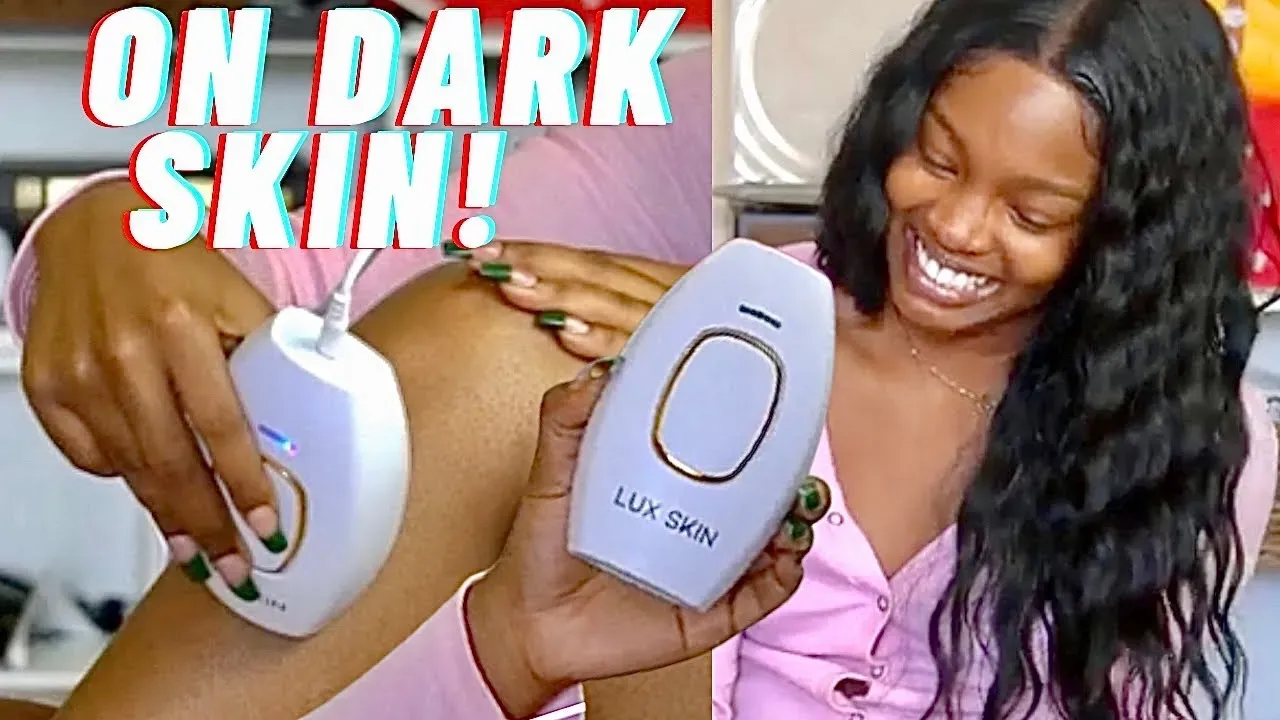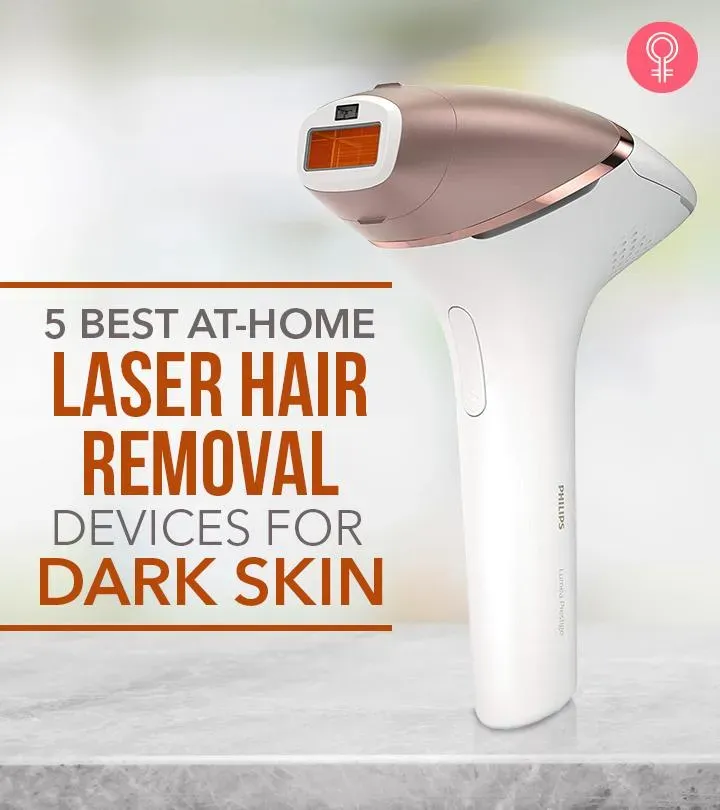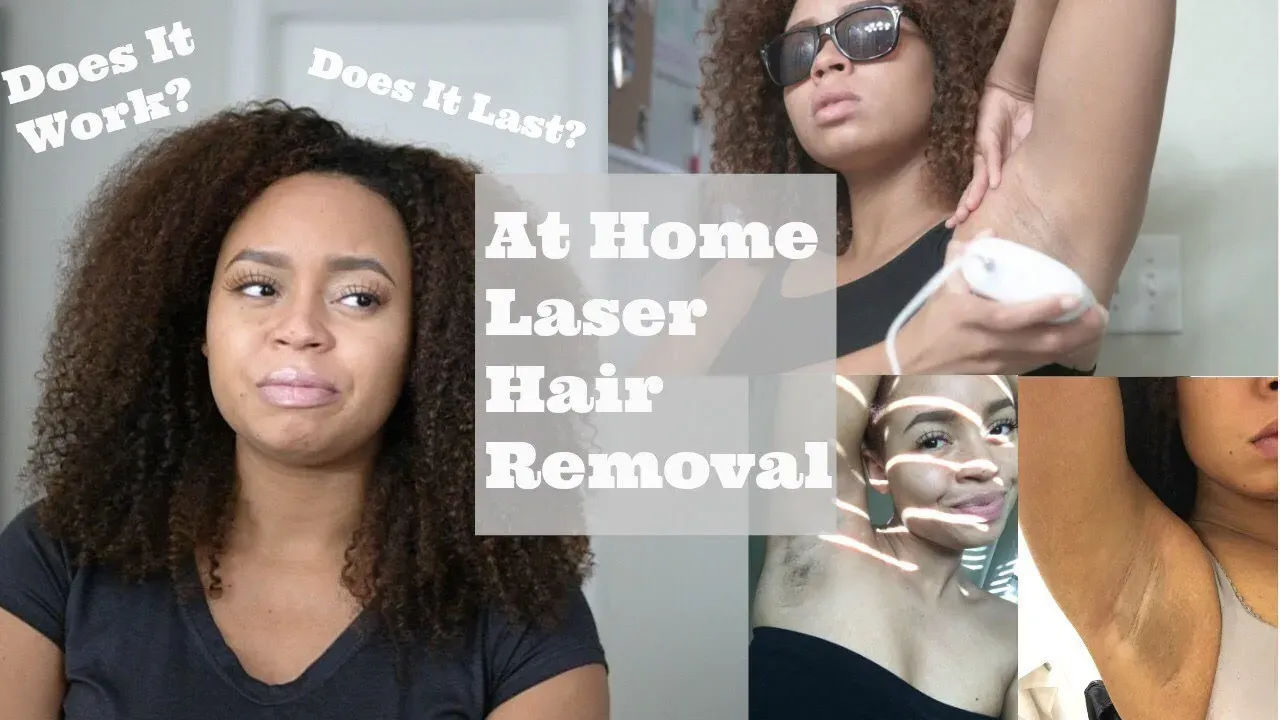Table of Contents
Tired of the endless cycle of shaving, waxing, or dealing with ingrown hairs and irritation?
Why Laser Hair Removal for Dark Skin Needs Specific Tech

Why Laser Hair Removal for Dark Skin Needs Specific Tech
so you're looking into at-home laser hair removal, right? And you have dark skin. This isn't a minor detail; it's the whole ballgame when it comes to picking the right device. Here's the deal: standard lasers target the pigment (melanin) in the hair follicle. That's how they work. But melanin isn't just in your hair; it's in your skin too, and in higher concentrations in darker skin tones. If a laser isn't designed to differentiate between the melanin in the hair and the melanin in the skin, it can heat up the skin along with the follicle. This can lead to some seriously unwelcome side effects like burns, blisters, hyperpigmentation (dark spots), or hypopigmentation (light spots). Nobody wants that.
Identifying Safe AtHome Laser Hair Removal for Dark Skin

Identifying Safe AtHome Laser Hair Removal for Dark Skin
The Right Technology Matters
so now you know why just any old laser or IPL (Intense Pulsed Light) device won't cut it for darker skin tones. The key is finding technology that specifically minimizes the risk to the melanin in your skin while still zapping the hair follicle. Look for devices that use diode lasers, often around the 810nm wavelength. These are generally considered safer because they can penetrate deeper into the skin to target the follicle directly, bypassing some of the melanin in the upper layers. Some advanced IPL devices can also be suitable, but they need specific filters and lower energy settings designed for darker skin. It's not just about the light itself, but how the device controls and delivers it.
Checking Device Features and Claims
Beyond the core technology, you need to be a detective when reading product descriptions. Does the device explicitly state it's safe and effective for darker skin tones? Don't just take marketing buzzwords at face value. Look for devices that mention FDA clearance for use on a wider range of skin types, specifically Fitzpatrick skin types IV, V, and VI. A built-in skin tone sensor is a huge plus – it automatically adjusts settings or prevents firing if your skin is too dark or unevenly tanned, adding a layer of safety. Check for adjustable energy levels; being able to start low and slowly increase is crucial for testing your skin's reaction. Ignoring these details is like driving blind.
Here’s a quick checklist of features to seek out:
- Diode laser technology (often 810nm wavelength)
- Explicit claim of safety for darker skin tones (Fitzpatrick types IV-VI)
- FDA clearance for use on these skin types
- Integrated skin tone sensor
- Adjustable energy level settings
Top Contenders: Best Laser Hair Removal At Home for Dark Skin Devices

Top Contenders: Best Laser Hair Removal At Home for Dark Skin Devices
Considering Diode Lasers for Darker Tones
Alright, so you've done your homework and know you need something specific. When we talk about the best laser hair removal at home for dark skin, diode lasers often come up first. Why? Because they typically use a longer wavelength, like 810nm. Think of it like this: shorter wavelengths are like scattershot, hitting pigment everywhere. Longer wavelengths are more like a targeted beam, going deeper to the follicle base where the hair is, without frying the surface skin where melanin lives. This makes them a safer bet for Fitzpatrick types IV, V, and VI. It's not a magic bullet, mind you, and technique still matters, but the technology gives you a better starting point.
Looking at FDA-Cleared Options
Now, let's talk about who's actually making these things work for darker skin. Finding the absolute best laser hair removal at home for dark skin involves checking for FDA clearance specifically for a broader range of skin tones. Remember that Iluminage Touch device? That one often gets mentioned because it combines IPL and radio frequency (RF) energy, which some say makes it safer for darker skin by using RF to target the follicle independent of pigment. It was one of the earlier ones with wider clearance. There are others now, but you have to read the fine print and look for that specific clearance statement for darker skin types, not just a general "FDA cleared" stamp.
What are some key things to ask yourself when comparing devices?
- Does it clearly state suitability for your specific skin tone (IV, V, or VI)?
- Does it have independent reviews from people with similar skin tones?
- What is the stated wavelength or technology used?
- Is there a skin tone sensor or adjustable settings?
- How many pulses or flashes does the device offer?
Exploring Other Potential Technologies
Beyond traditional diode lasers, some newer technologies or combinations are emerging. Some devices use lower energy levels or different pulse patterns designed to be gentler on darker skin. The important part is that the manufacturer provides clear data and claims that are backed up, ideally with FDA clearance for the relevant skin types. Don't just fall for flashy marketing. Do a little digging. Check forums, read user experiences, and maybe even look up clinical studies if you're feeling particularly dedicated. Finding the best laser hair removal at home for dark skin isn't about picking the prettiest box; it's about finding the tech that respects your skin's unique needs. You can even find more detailed comparisons on sites like hairawaybylaser.com.
Getting Results: Using the Best Laser Hair Removal At Home for Dark Skin Safely

Getting Results: Using the Best Laser Hair Removal At Home for Dark Skin Safely
Prep Work and Patch Testing: Don't Skip This
Alright, you've potentially found what seems like the best laser hair removal at home for dark skin device. Now, don't just rip it out of the box and start zapping. Prep work is non-negotiable, especially for darker skin. Cleanse the area you plan to treat thoroughly. Shave the hair right before treatment; the laser needs to target the pigment in the follicle, not the hair sitting on top of your skin. Leaving stubble just increases the chance of surface burns. More importantly, you *must* do a patch test. Pick a small, inconspicuous area – maybe a patch on your leg or arm. Use the lowest energy setting recommended for your skin tone. Wait 24-48 hours. Check for any adverse reactions: excessive redness, swelling, blistering, or changes in pigment. If your skin throws a fit, this device isn't for you.
Technique, Consistency, and Managing Expectations
Assuming your patch test went smoothly, you can start treating larger areas. Follow the device's instructions religiously. Most require holding the device flush against the skin. Overlapping pulses can lead to too much energy in one spot, which is a recipe for disaster on darker skin. Move the device methodically. This isn't a race. Consistency is key, but don't overdo it. Most devices recommend treatments every 1-2 weeks initially, then spacing them out as hair growth reduces. Remember, at-home devices are generally less powerful than professional machines. You're not going to be completely hair-free overnight. Expect a gradual reduction in hair density and thickness over several months. Patience is required when pursuing the best laser hair removal at home for dark skin results.
- Cleanse skin before treatment.
- Shave the area immediately before using the device.
- Perform a patch test on a small area first.
- Wait 24-48 hours after the patch test to check for reactions.
- Follow the device's instructions for technique and frequency.
- Avoid overlapping pulses during treatment.
- Be patient; results take time and consistency.
Making an Informed Choice for At-Home Hair Reduction
Navigating the world of at-home laser hair removal when you have dark skin requires careful attention to technology. It's not about finding a miracle cure overnight, but rather a tool that works safely with your specific skin type. Prioritizing devices designed to minimize risk, like those using specific wavelengths suitable for melanin, is non-negotiable. Remember, results take time and consistent, careful application. Do your homework, understand the limitations, and use the device exactly as instructed. With the right approach, achieving significant hair reduction at home is a realistic goal, not just a marketing promise.
